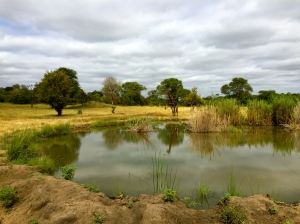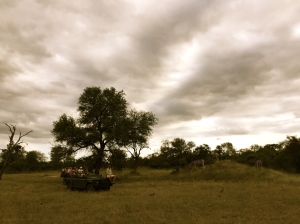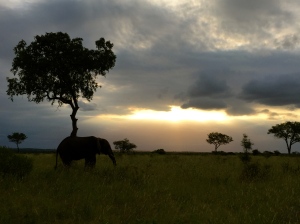In Desert and Wilderness – Part II
To go on a safari is a lifetime opportunity. But when the opportunity appears, the reality also kicks in. Why is it so expensive? Which game reserve to choose? How to get there?

Giraffe and Its Reflection in Sabi Sands, South Africa
“It’s a walking zoo! Why would you spend so much money on it?”, said my friend and declined to go on a safari with me. For months, I debated and researched whether to do one. Finally I decided that I shall go big or go home. To fly for 30 hours and not to experience the true Africa, the one that I as a kid watched on Discovery channel was not an option. So I went, crossing the country all the way to the border with Zimbabwe and Mozambique, to Sabi Sands game reserve.
There where three requirements that had to be fulfilled in my mind: I wanted to see the big five in natural setting where they roam freely, I wanted to stay as close to them as possible – hence, in the bush, and I wanted to see leopards. The former one was the most challenging requirement because leopards are masters of disguise and could be seen only when they allow to. However, for some reason leopards love Sabi Sands, which turns to have the greatest concentration of them. Without a doubt this was the place where I had to be!





Following South African plantations of oranges, bananas and olives, behind the mountains of evergreen trees, lies the wilderness disconnected from the civilization with an electrical fence. This is the place where nature sets the rules and men oblige to them if they do not want to be hurt or in the worst case eaten. Little did I know that after three days of staying in the bush, my life will never be the same again.

Zebras on Termite Mound in Sabi Sands, South Africa
What really changed is my appreciation of nature and my understanding of human vulnerability. National parks are the last pieces of wilderness where human involvement is forbidden; where African elephant dies from starvation after loosing its sixth and last set of molar teeth and where the lion leading it’s pride will kill all cubs that are not his in order to secure his hereditary line. This truly is the survival of the fittest. For the first time ever I also felt vulnerable but in an odd way.
The night before flying over to Johannesburg to embark on the journey to Sabi Sands, I ate a kebab that consisted of ostrich, impala, kudu, and wildebeast meat. 24 hours later I saw those animals in the natural setting, and realized that I would have to turn vegetarian because I would not know how to kill these huge and rather vicious beasts.





The safari was everything and so much more. It is an unpredictable game where one roams at dawn and dusk looking for animals in the waste land that is occasionally disrupted with an acacia or marula tree and an elephant right below it. Yet after 1.5 days of looking for big cats, I got impatient. I stopped caring for zebras, elephants and giraffes. What I wanted were lions and leopards that were hidding somewhere in high savannah grass, but there was no sign of any.

Elephant Under a Tree in Sabi Sands, South Africa
After series of false baboon alarms on a potential preditor sighting, our fortune finally turned around. Our tracker received a call that a leopard was spotted, and we sped to the location in what was described by everyone as Ferrari safari. My last wish of what to expect from a safari was about to come true.
Filed under: Africa, Travelling | 2 Comments
Tags: Kruger National Park, Sabi Sands, Safari, South Africa, Tydon Safaris

Reblogged this on THE TRUE BEAUTY OF AFRICA and commented:
DO YOU LIKE NATURE? DO YOU LIKE THE WILD? THIS IS AFRICA!